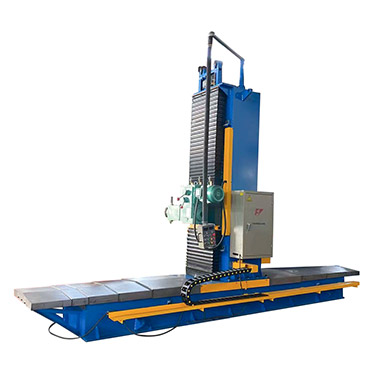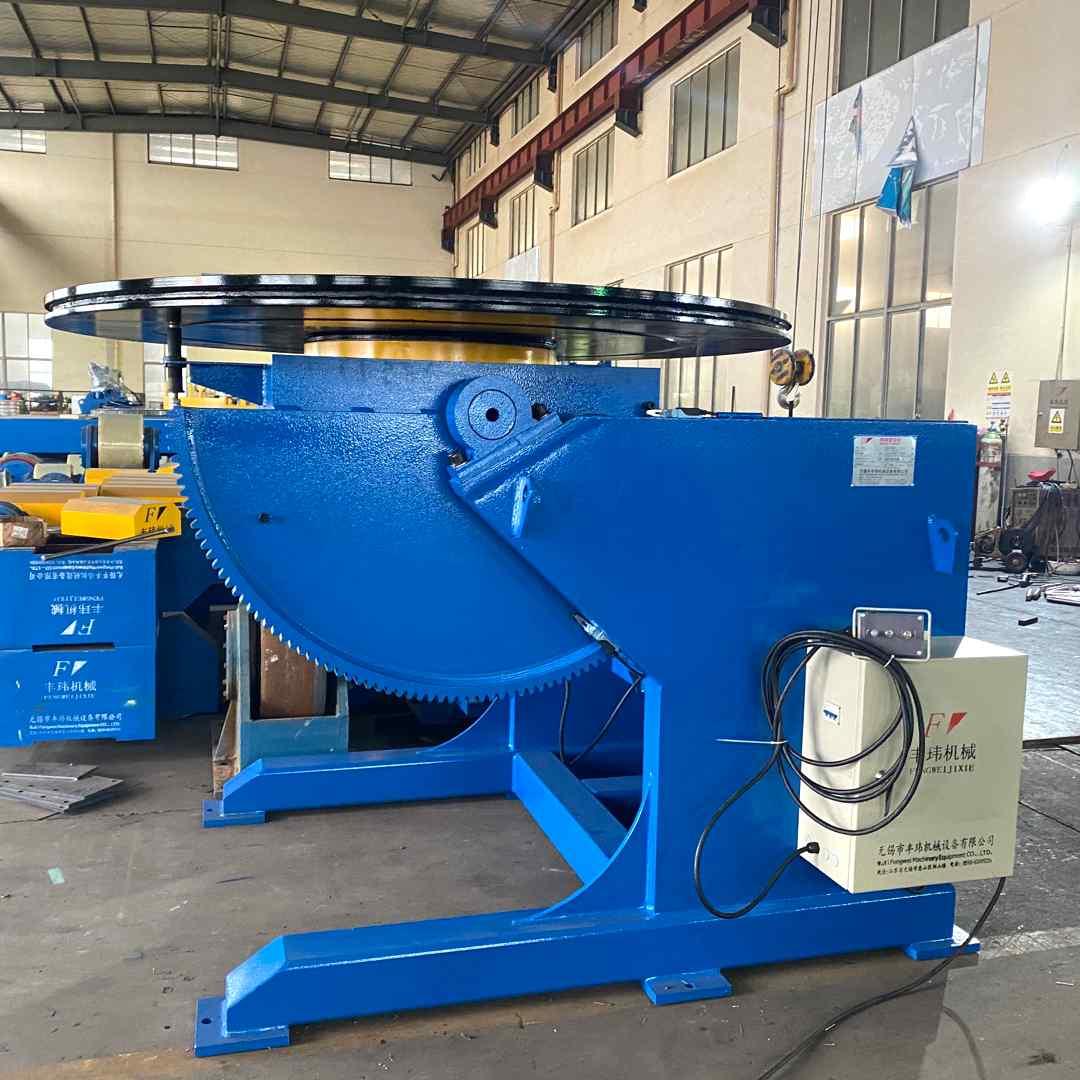Through the rotation and flipping of the welding turntable, the workpiece welding seam is in the best welding position for welding or rotating welding with other equipment. It is mainly used in conjunction with welding manipulators, gantry welding machines, welding robots, and other equipment to improve weld quality, reduce workpiece clamping and turnover, improve productivity, and realize automatic welding production. The most ideal matching equipment for welding of machine base, flange, spherical container, head, nozzle tee, and top cover.
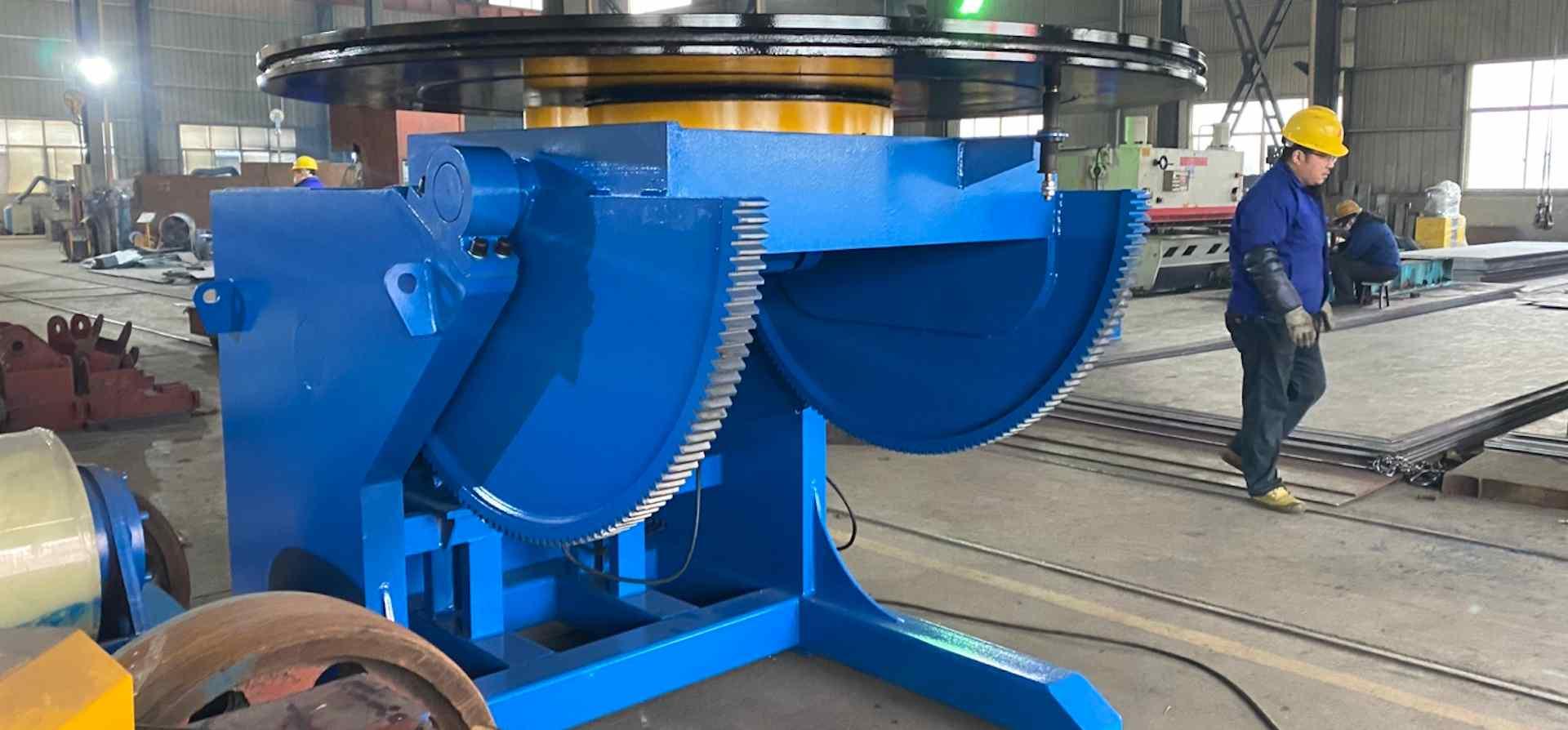
Main Feature of Welding Positioner:
▲ There are various types of positioners, such as fixed head and tailstock, adjustable headstock and tailstock, L-type double-turn type, C-type double-turn type, and so on.
▲ Through lifting, turning, and turning off the worktable, the workpiece is placed in the best welding or assembly position.
▲ It can be matched with a welding manipulator to form an automatic welding machine.
▲ It can be used as peripheral equipment of the robot to support the robot to realize automatic welding.
▲ Various special positioners can be designed and customized according to different types of workpieces and the process requirements of users.
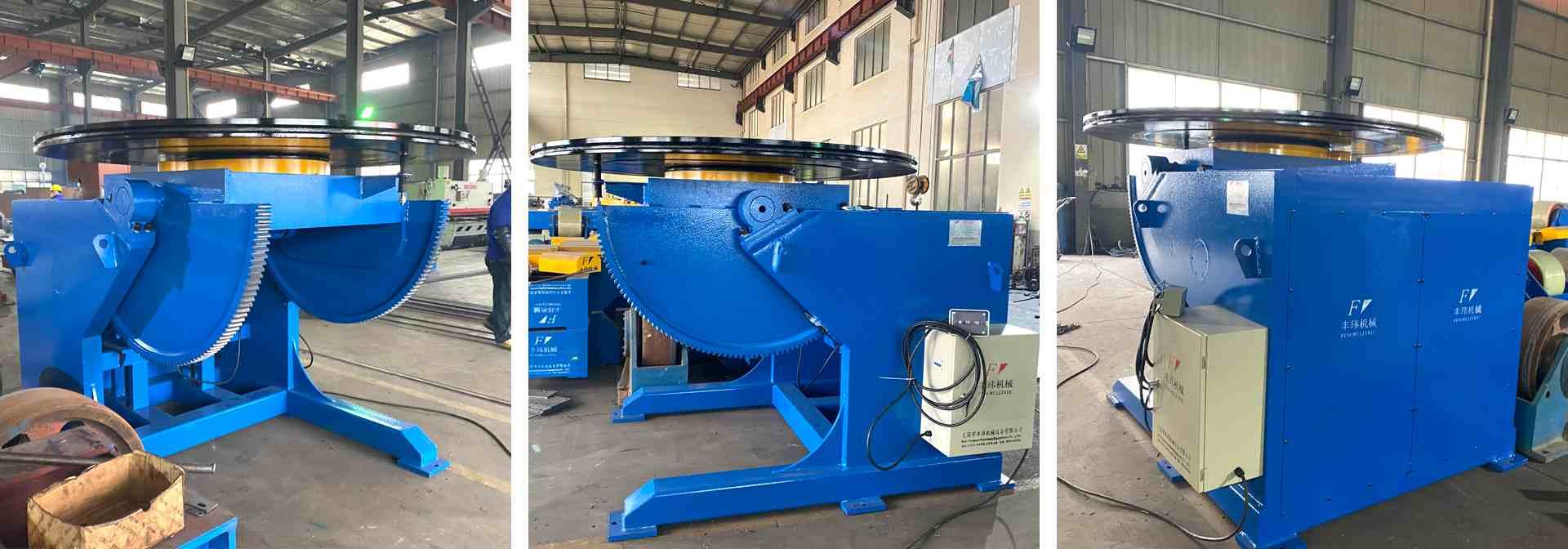
However, there are also three types of welding positioners. One is the single-turn type, which is widely used. To meet the needs of different workpiece clamping, there are three basic types, vertical, horizontal, and double-seat. The double seat is also divided into two types: fixed tailstock and movable tailstock. There is also a double rotary type, which is mainly to adapt to the clamping needs of different workpieces and to consider the reasonable force of the structure. There are also three basic types, L type, C type, and H type. The last is the tip-and-turn type, which also has a different structural design.
The functional design of the welding positioner can be explained from four aspects:
1. Ordinary type: the rotary motion is fixed-speed transmission;
2. Speed regulation type: at least one rotary motion is designed as variable speed transmission;
3. Joint control type: In addition to the speed regulation function, PLC and microcomputer control are used to make multi-machine and multi-degree-of-freedom linkage work; finally, the robot matching type: is used as an external axis of the robot or participates in welding; or only for station conversion, Do not participate in welding.
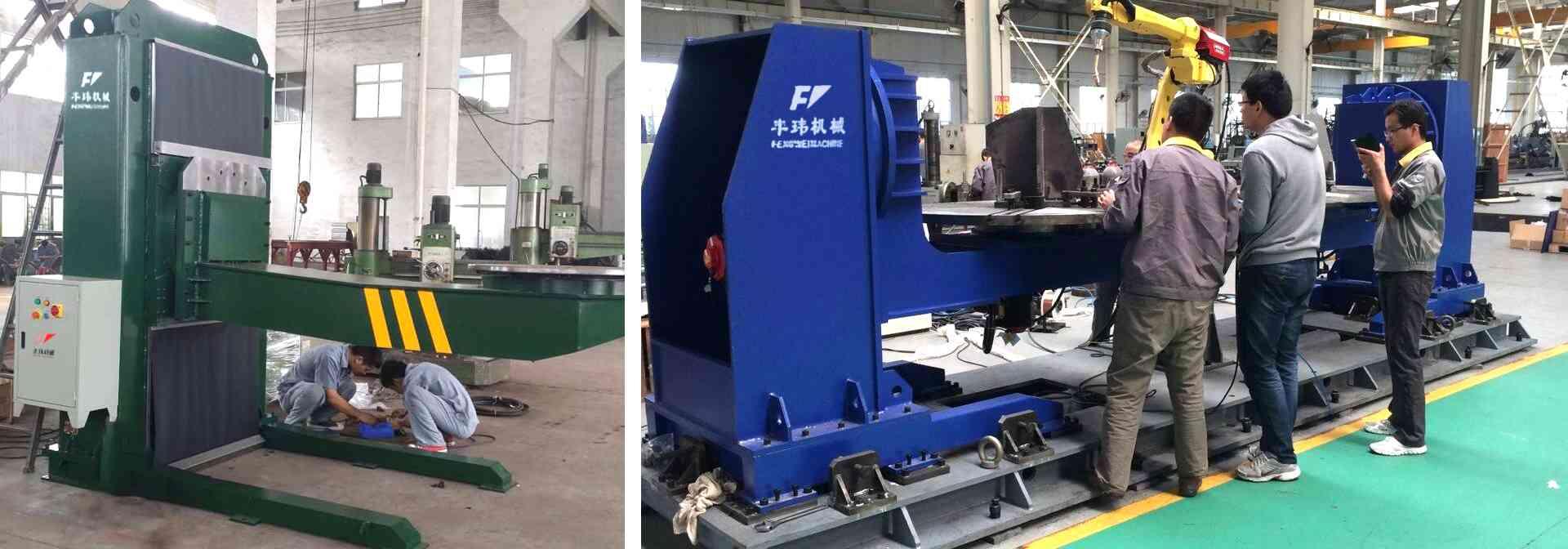
The safety performance of the welding positioner must be guaranteed, which is also the most important issue for R&D personnel. We must be highly conscientious in our daily use.
The positioner is a special welding auxiliary equipment, which is suitable for the welding position of the rotary work to obtain the ideal processing position and welding speed. It can be used with a manipulator and welding machine to form an automatic welding center, and can also be used for workpiece displacement during manual operation.
The rotation of the worktable adopts the stepless speed regulation of the frequency converter, and the speed regulation accuracy is high. The remote control box can realize the remote operation of the workbench, and can also be connected with the control system of the operating machine and the welding machine to realize the linkage operation. The welding positioner is generally composed of a worktable rotation mechanism and a turning mechanism. Through the lifting, turning, and rotation of the worktable, the workpiece fixed on the worktable can reach the required welding and assembly angle. The rotation of the worktable is variable frequency stepless speed regulation. , a satisfactory welding speed can be obtained.
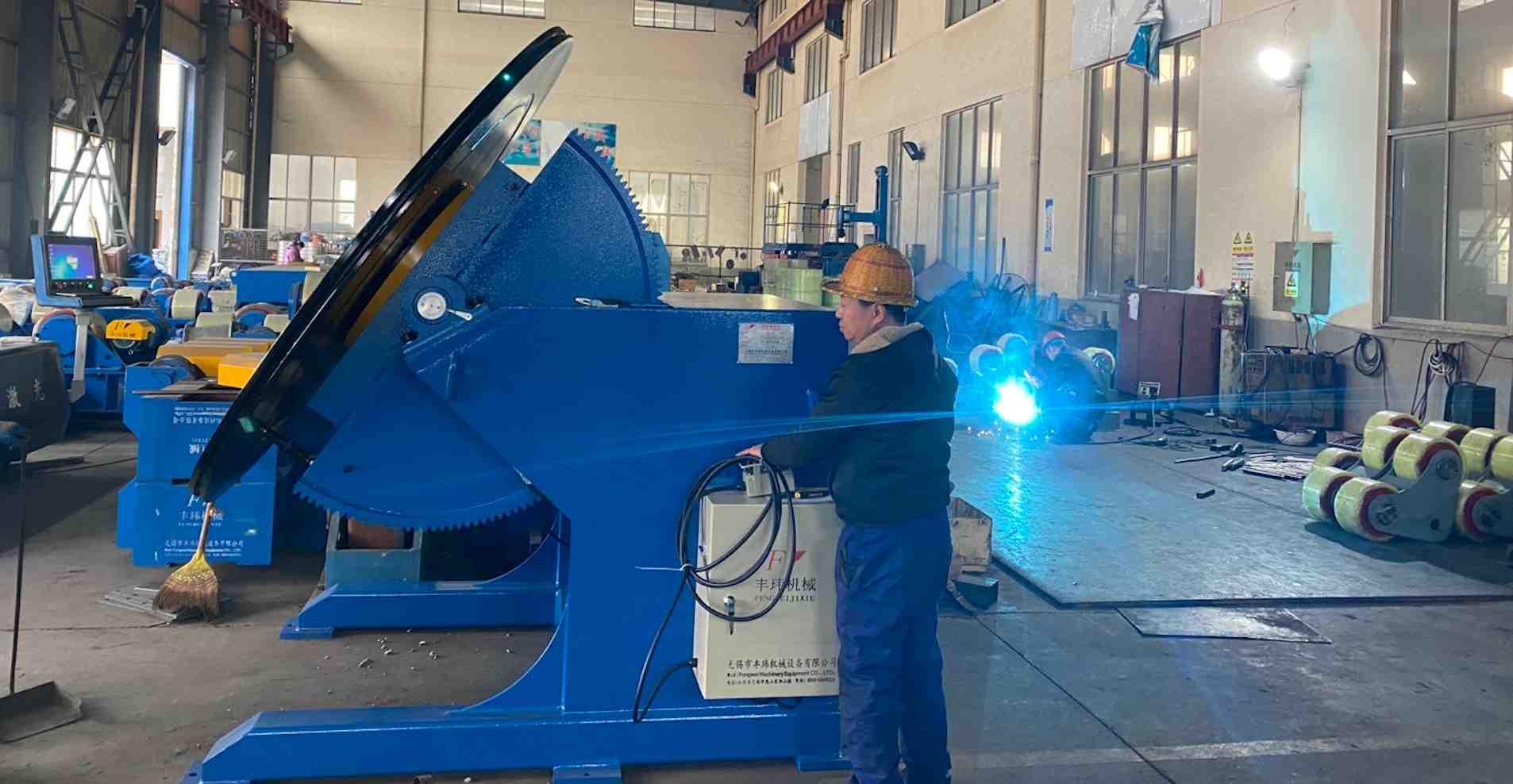
The classification of positioners can be divided into roll positioners, head and tail rotary positioners, head and tail lift rotary positioners, head and tail tiltable positioners, and double rotary positioners. The positioner can make the workpiece in the best welding or assembly position by lifting, turning, and turning off the worktable. It can be matched with a welding manipulator to form an automatic welding machine, and can also be used as a robot peripheral equipment to support the robot to realize welding automation. According to different types of workpieces and process requirements of users, it is equipped with various special positioners.





